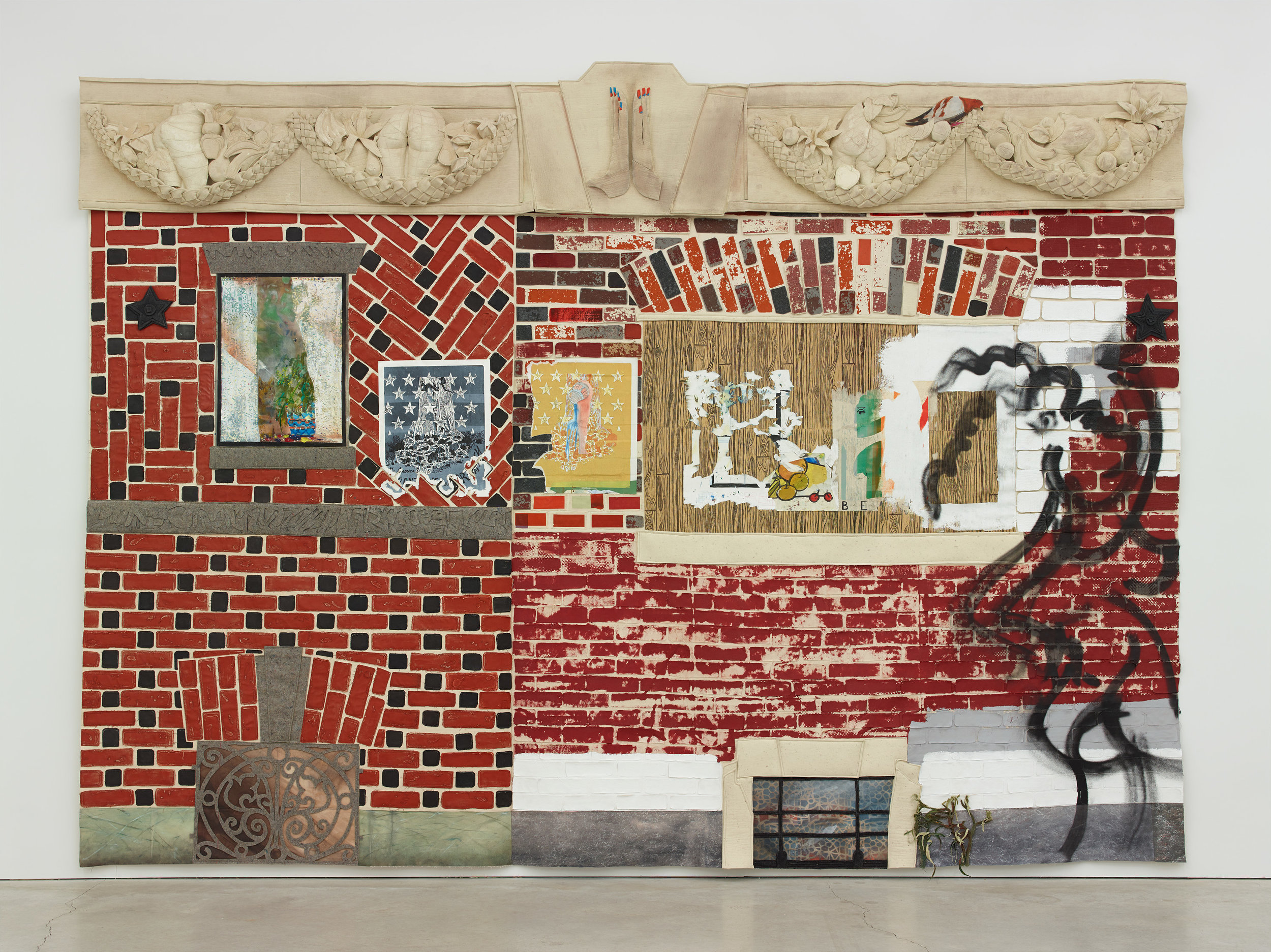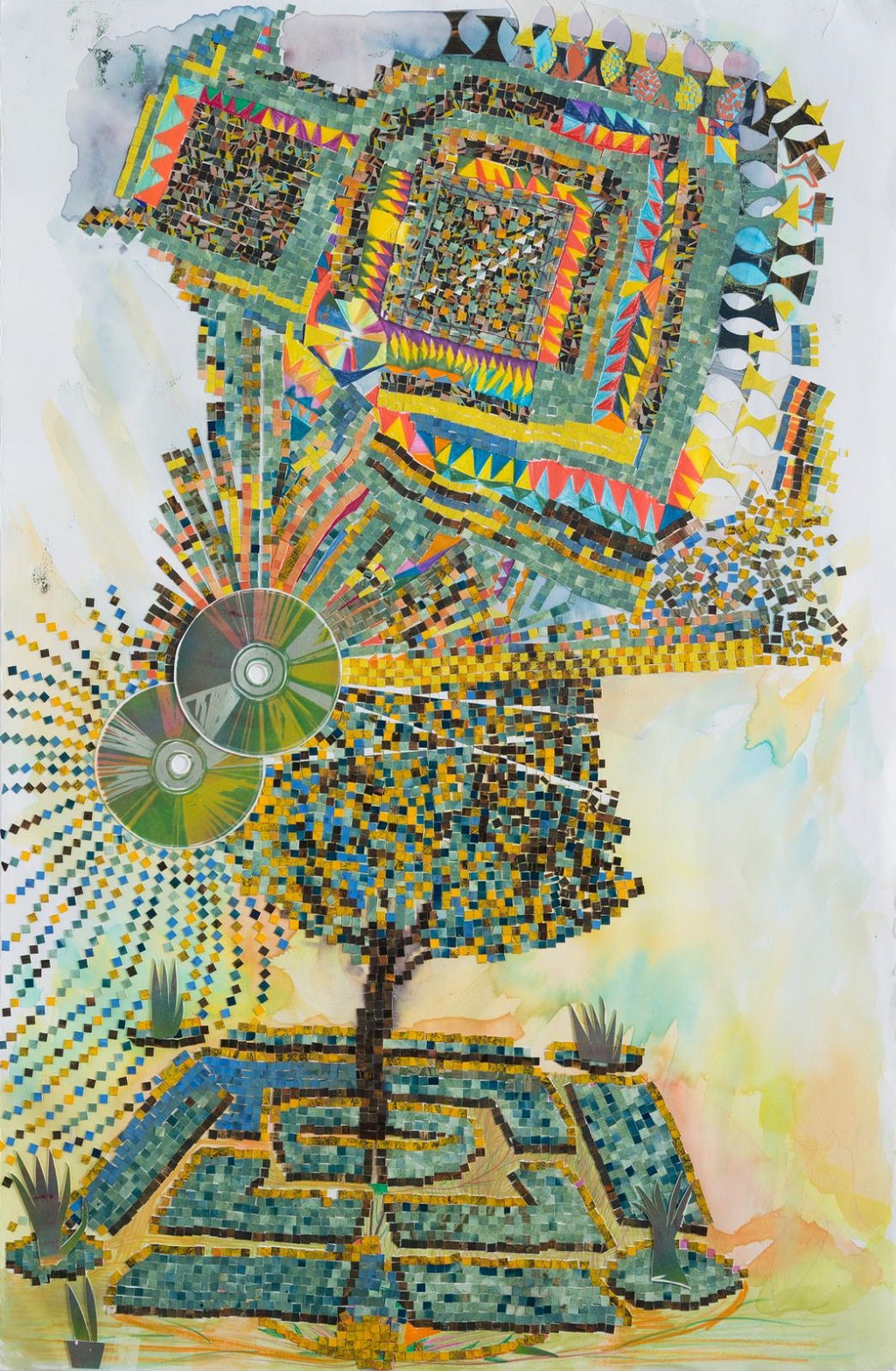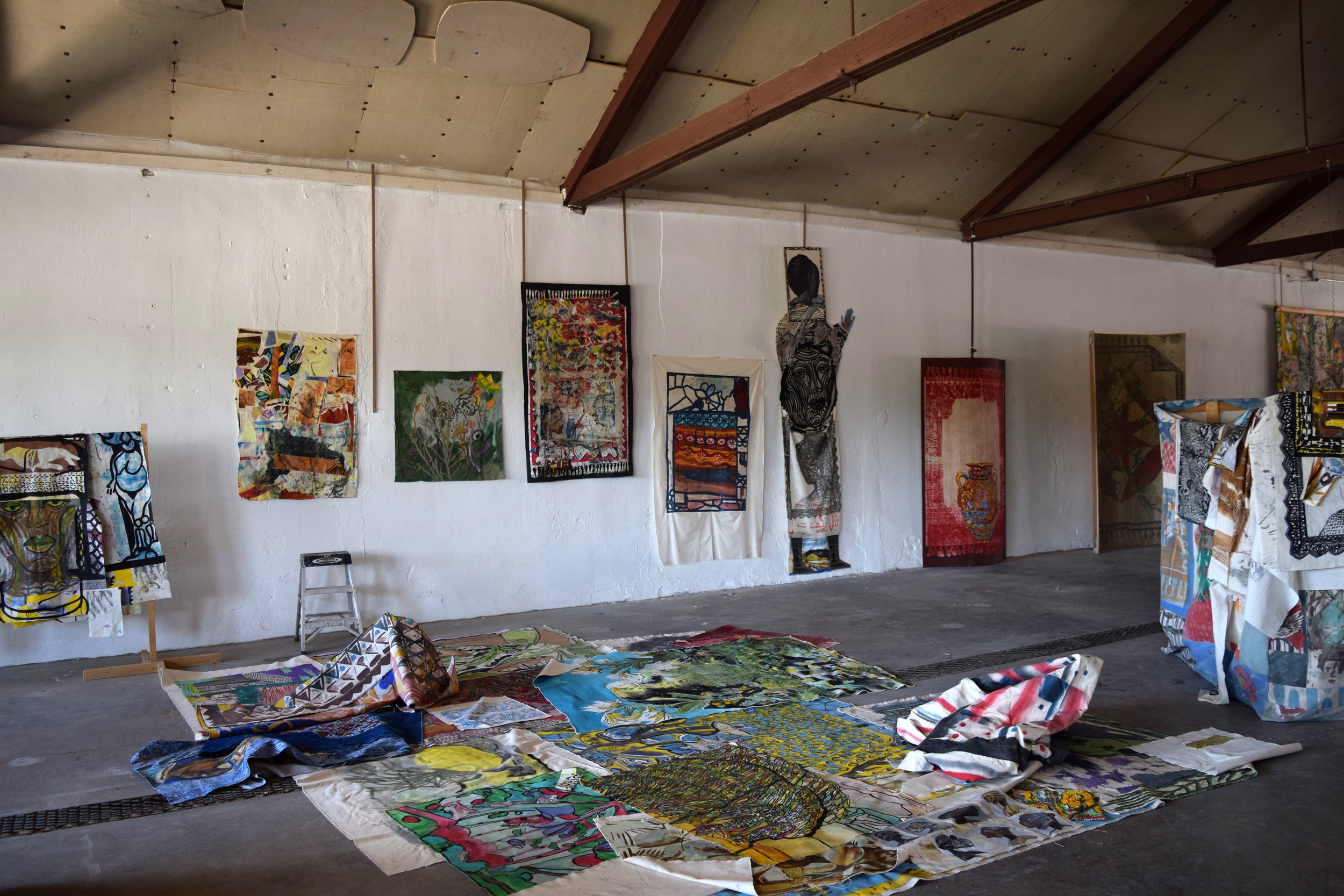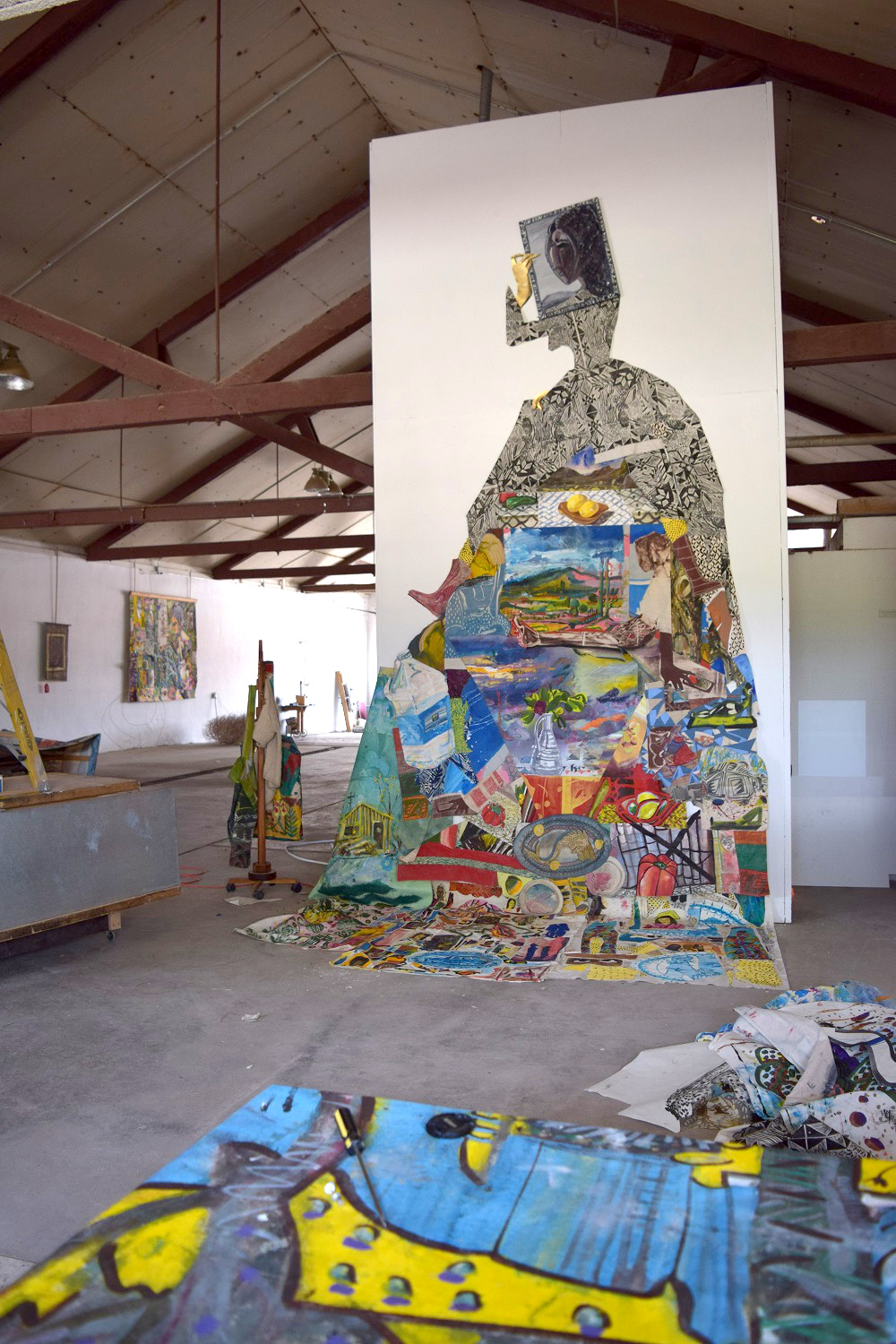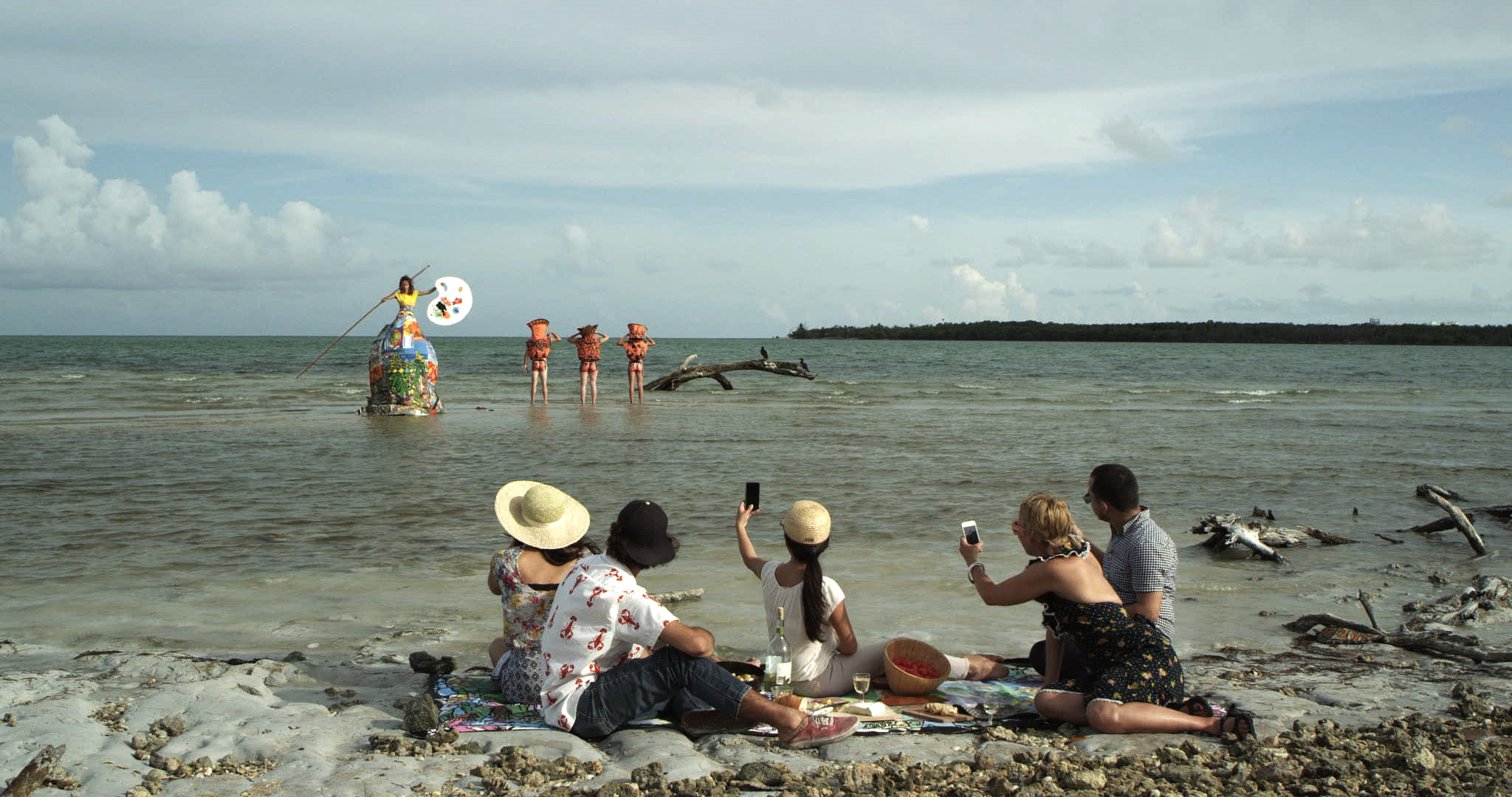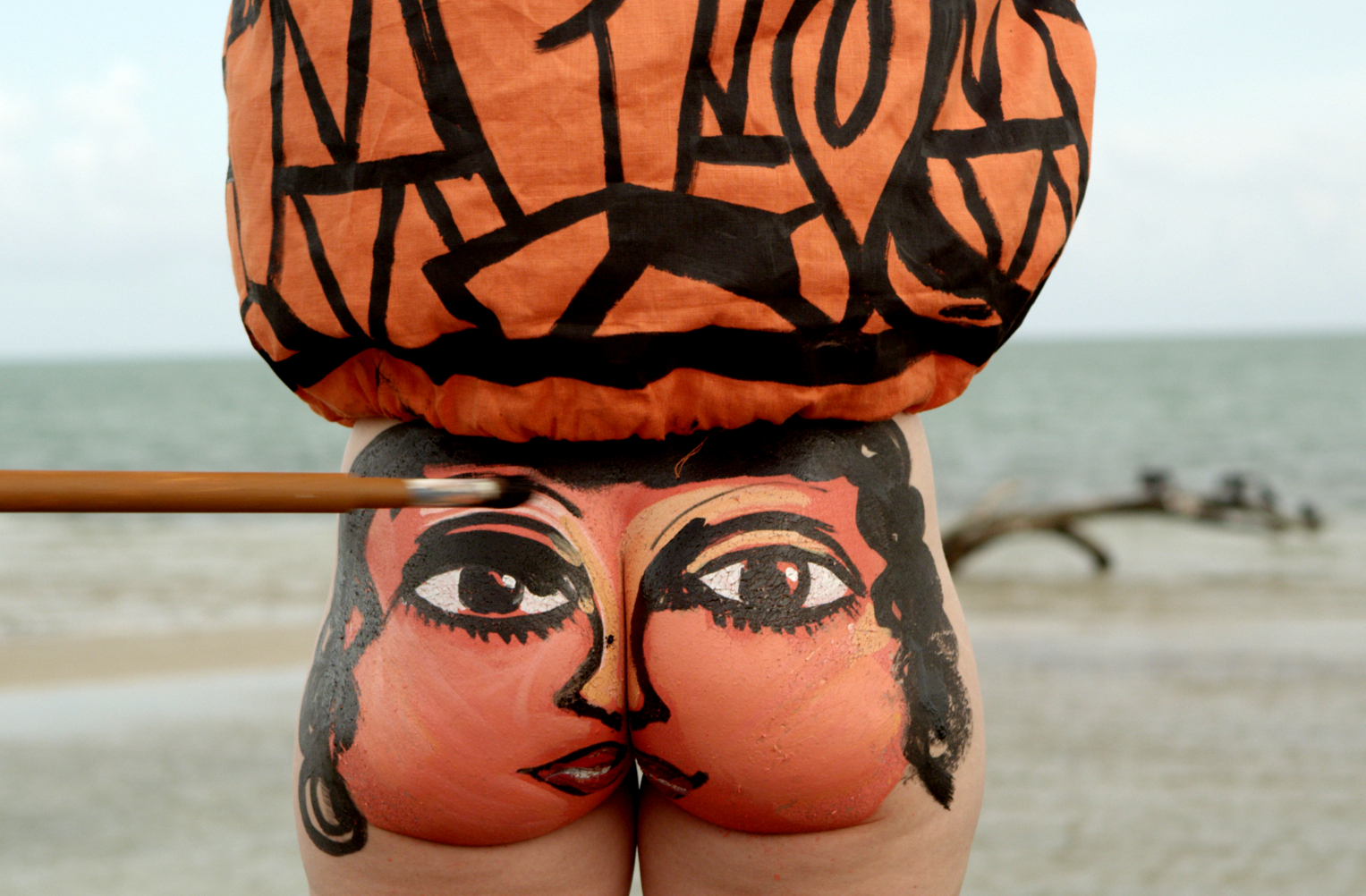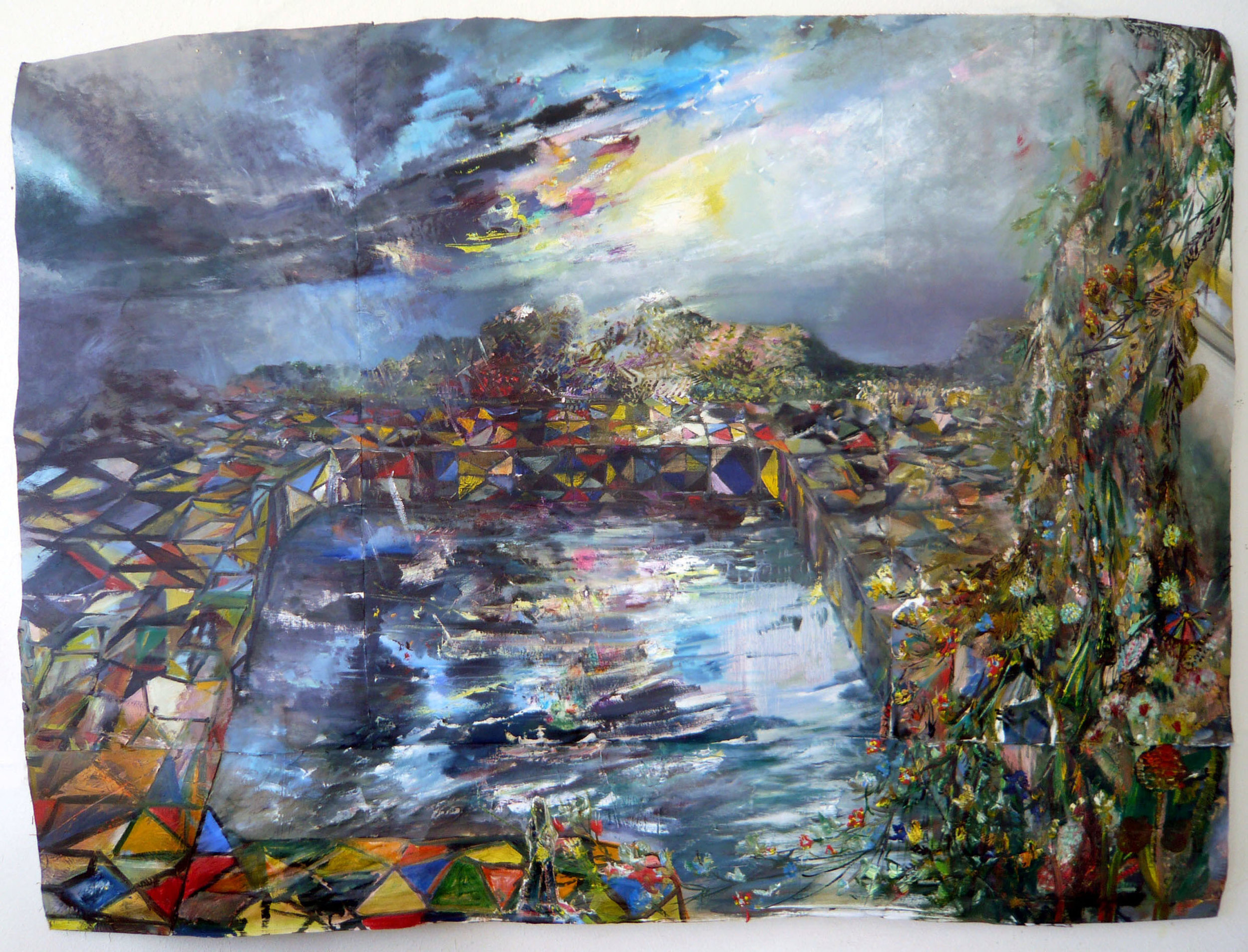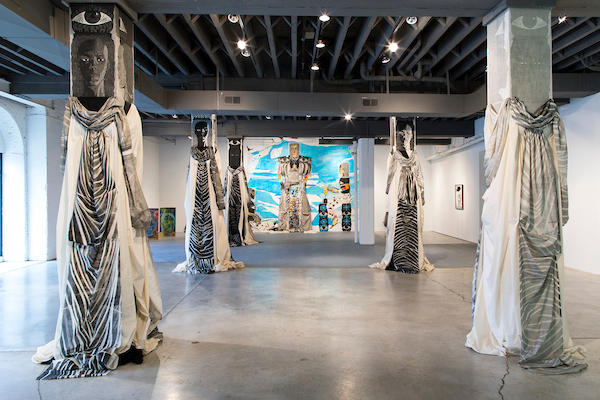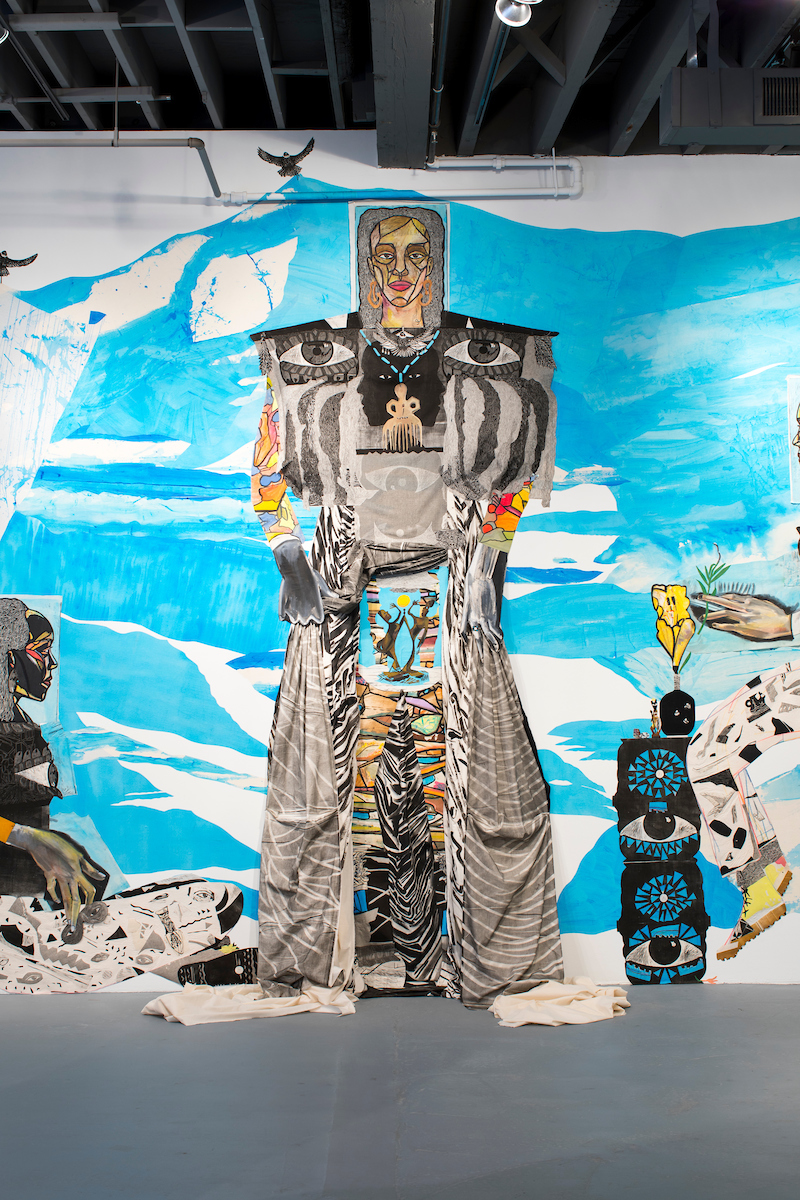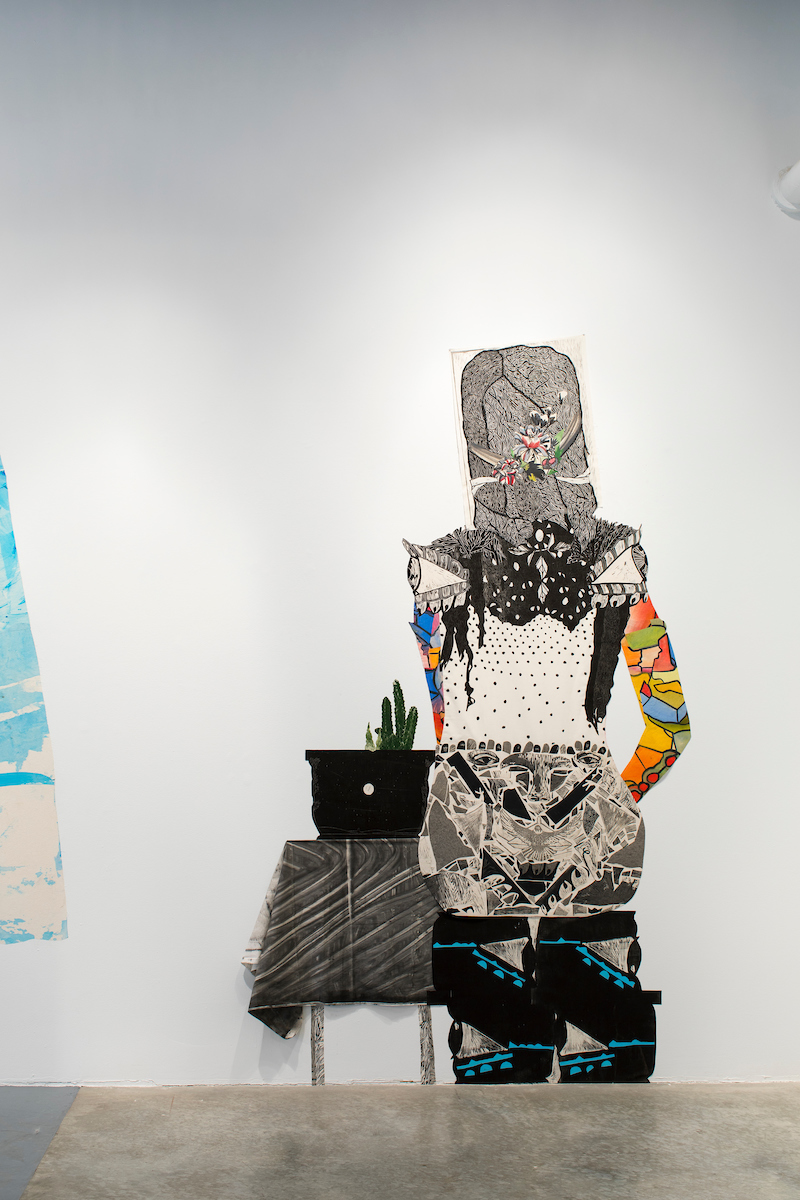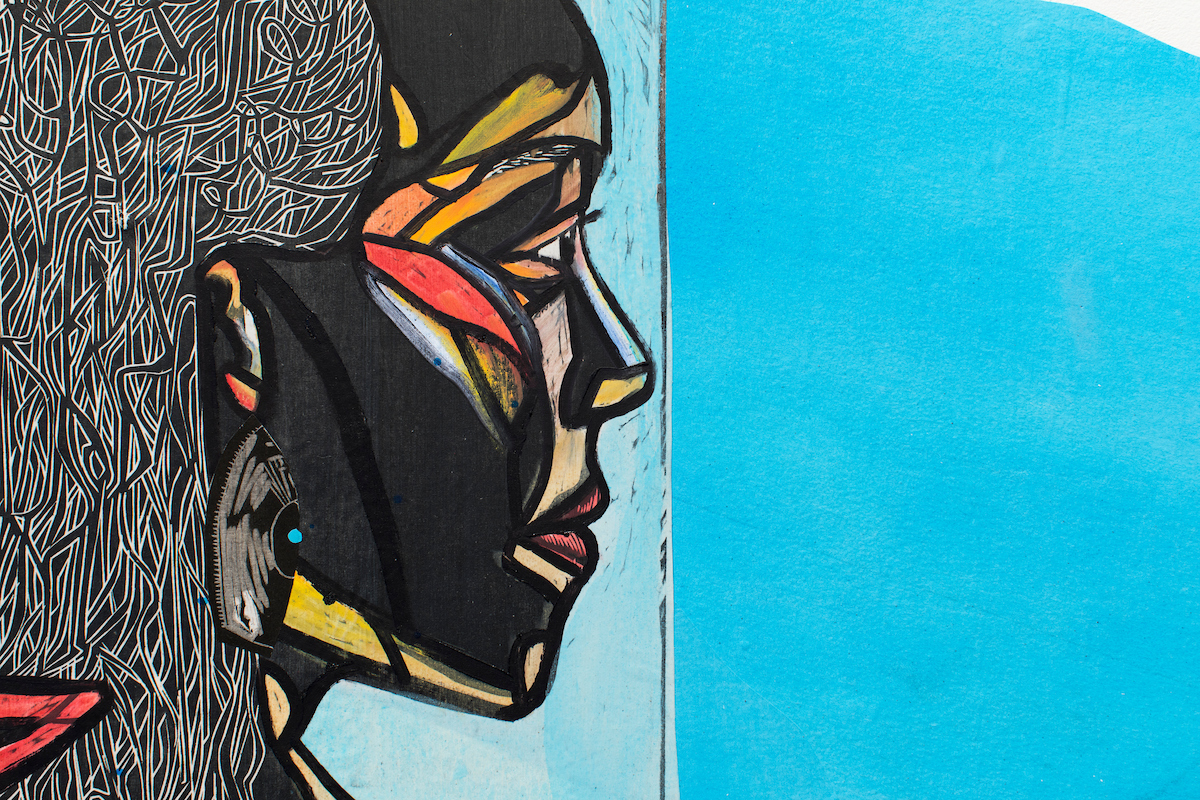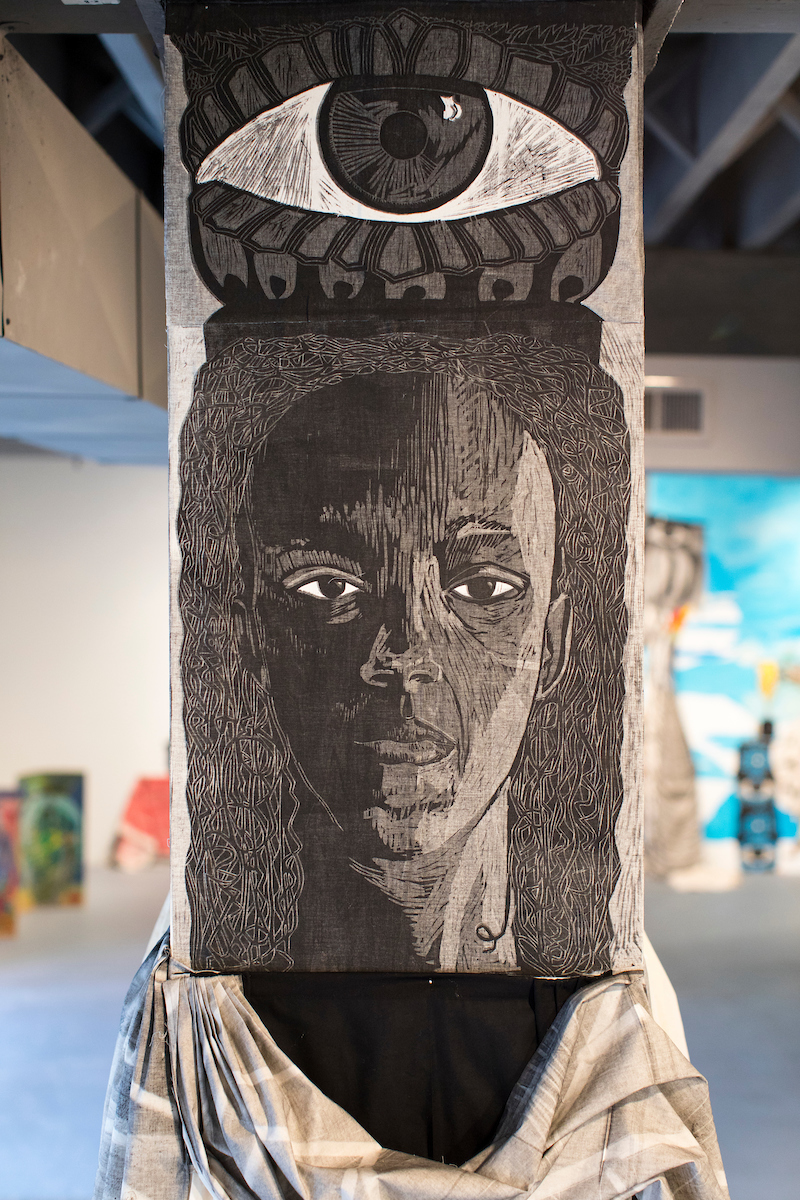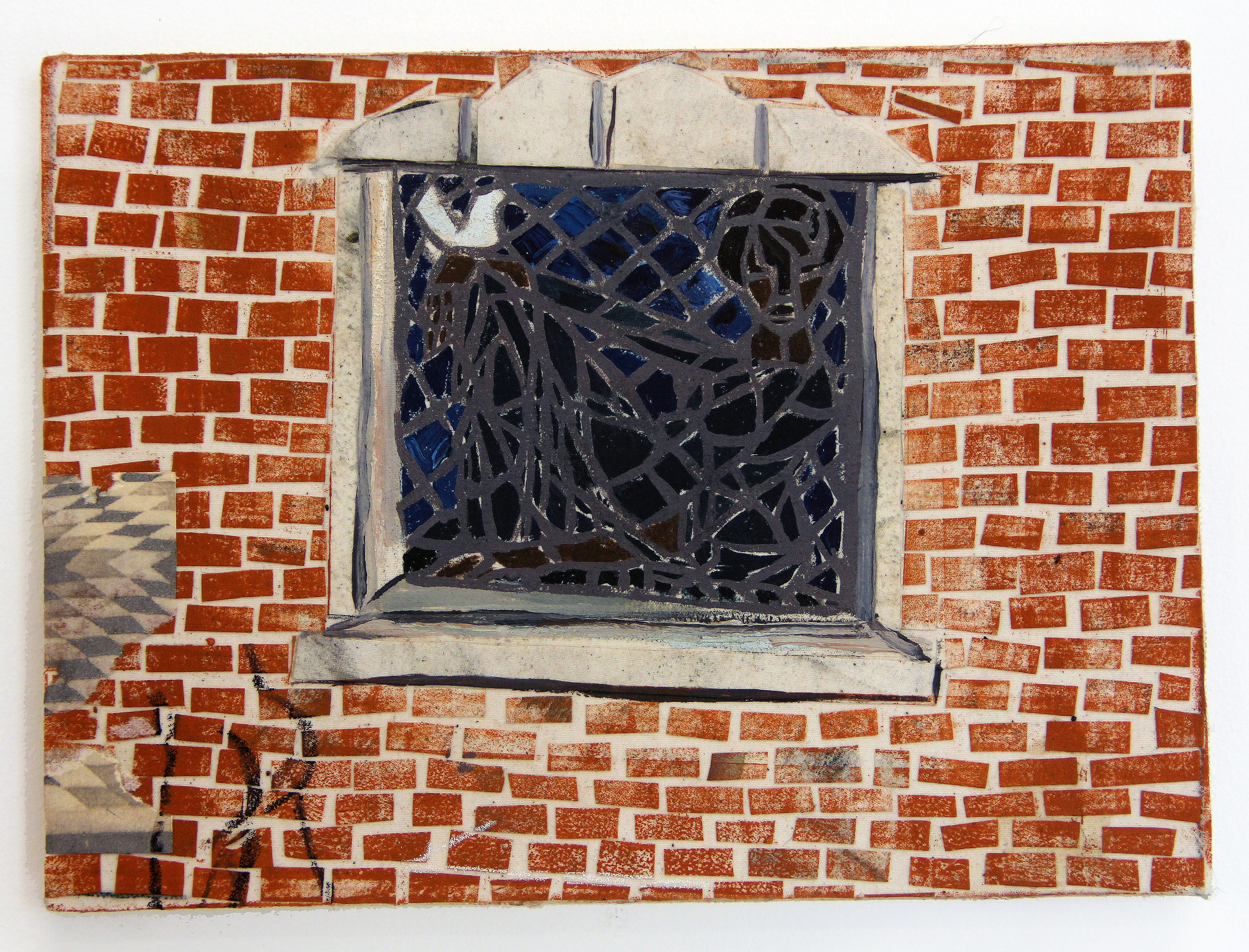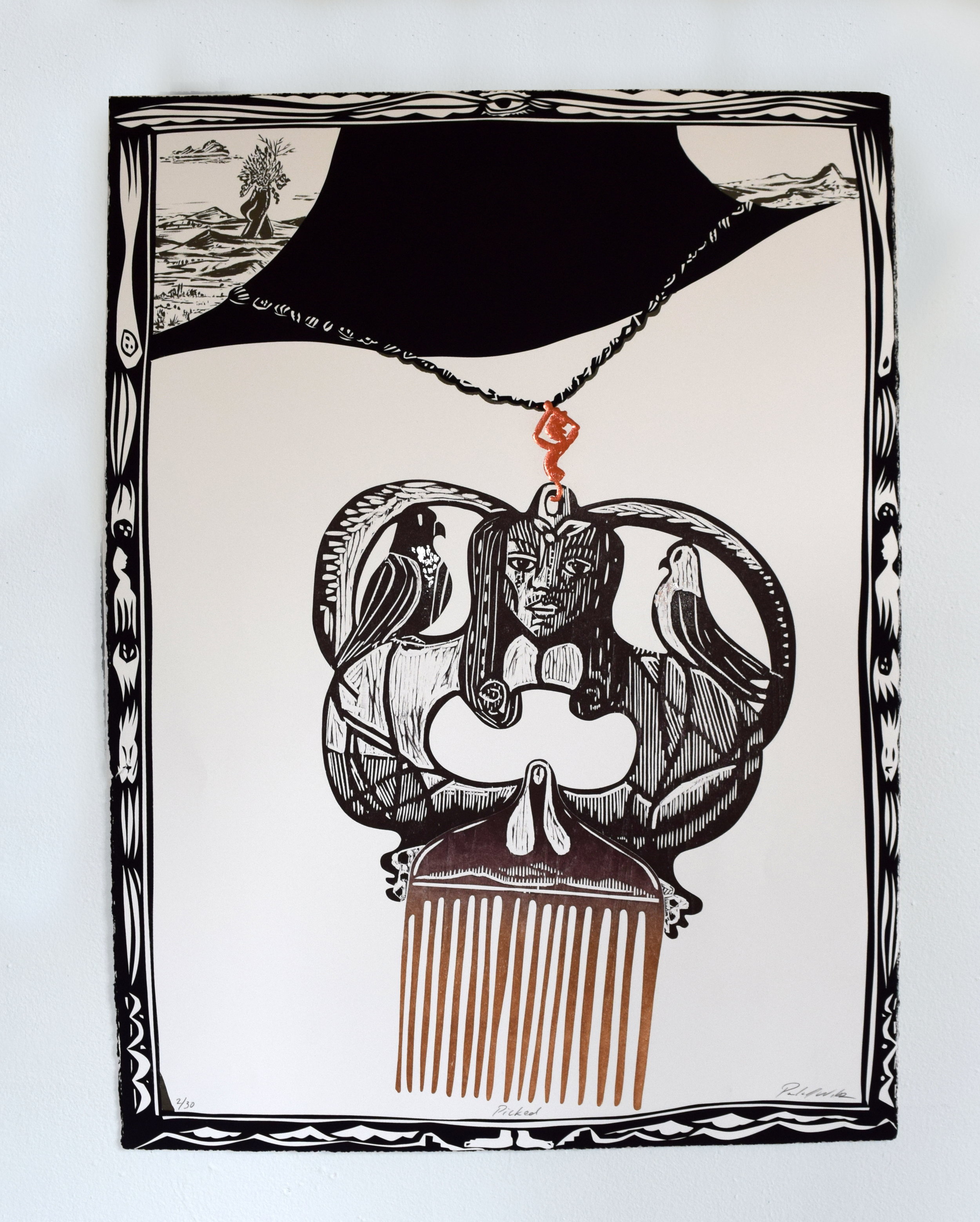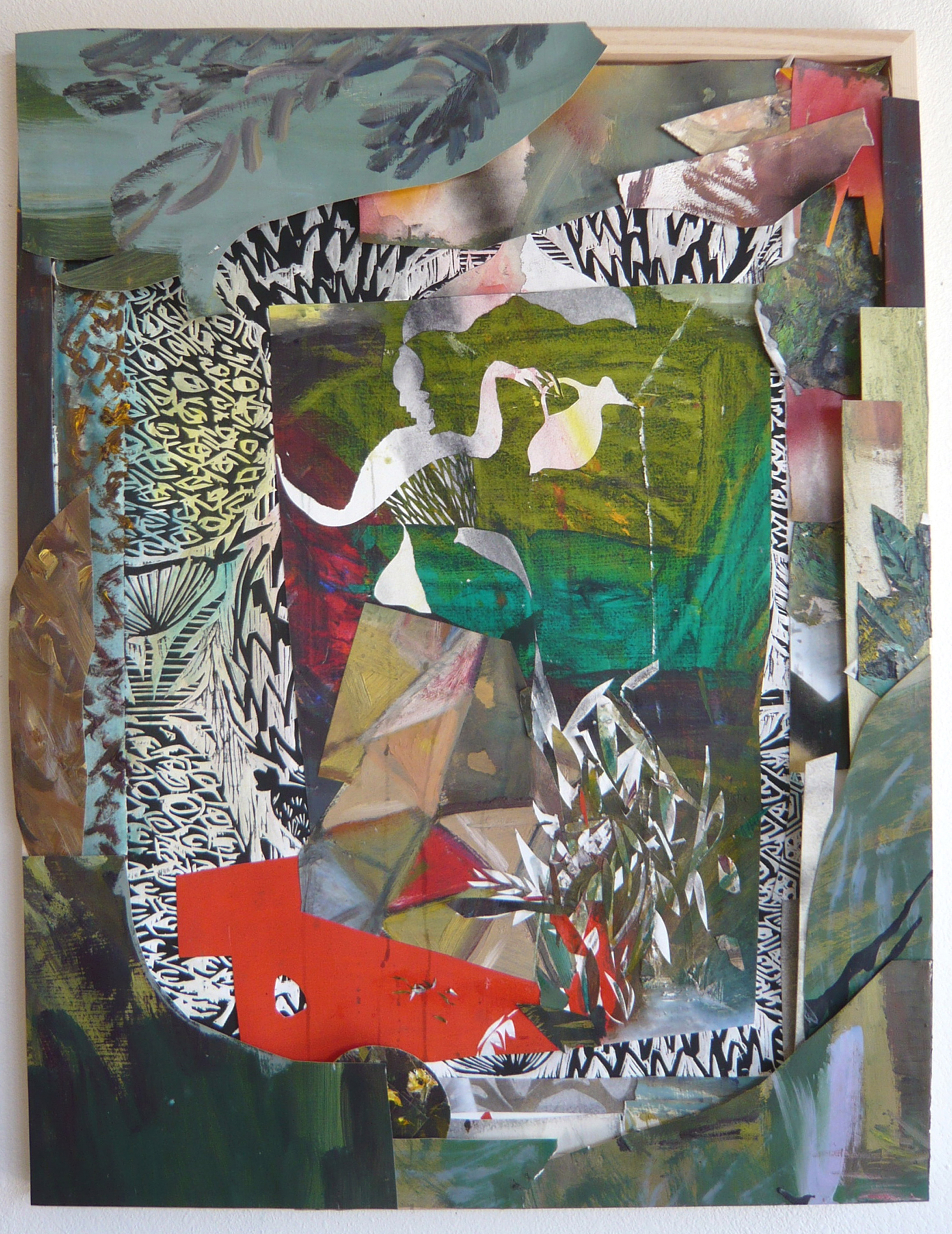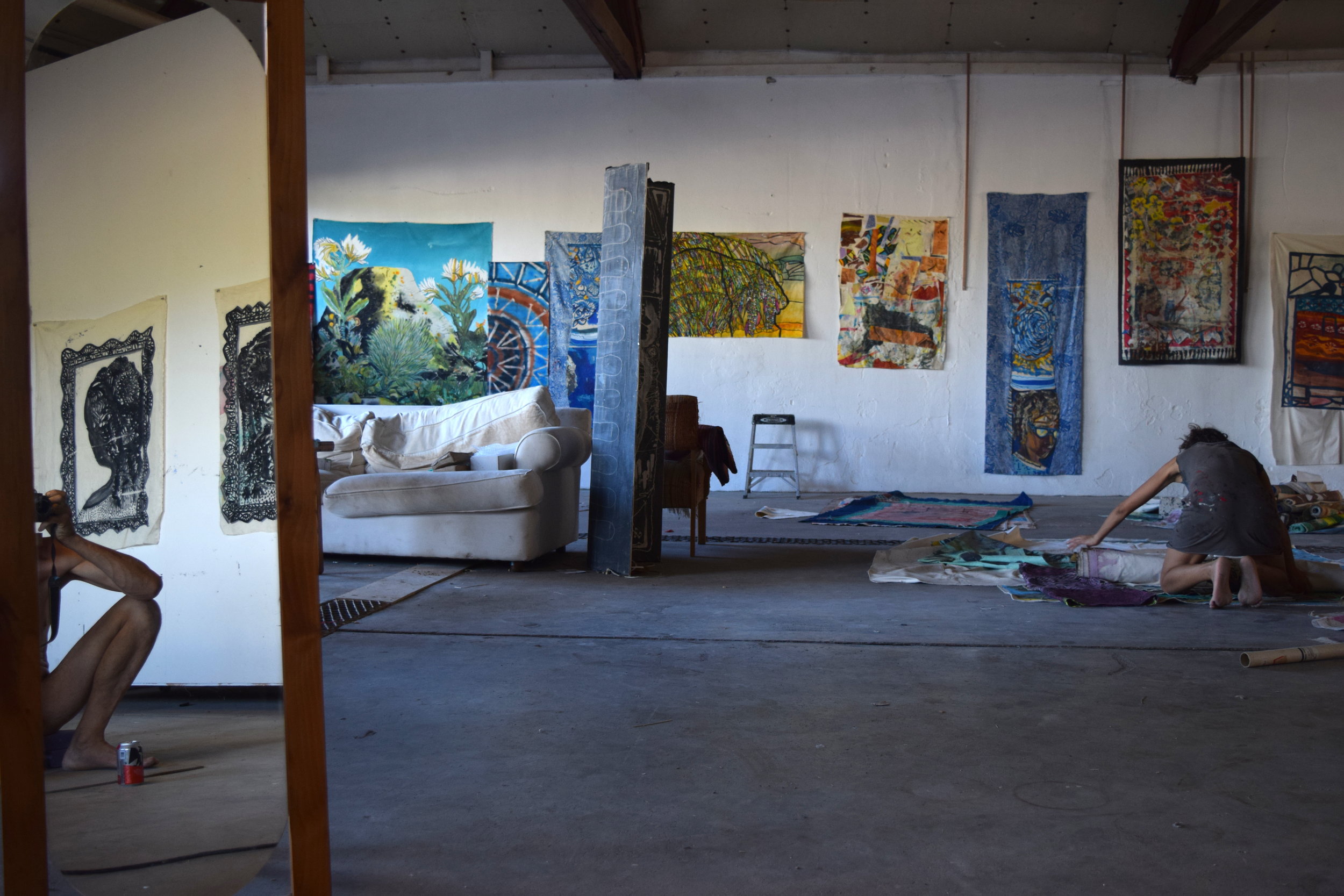Q&A: Paula wilson
By Jess T. Dugan | October 5, 2017
Based in Carrizozo, New Mexico, Paula Wilson is a multi-disciplinary artist whose work is included in the collections of The Studio Museum Harlem, Yale University Art Gallery, Mildred Lane Kemper Art Museum, and Saatchi Gallery, among others. Her solo exhibitions include The Bemis Center of Contemporary Arts, Cherry & Lucic, The Fabric Workshop and Museum, and the Center for Contemporary Arts in Santa Fe. She holds a MFA from Columbia University and co-runs the artist-founded organizations MoMAZoZo and the Carrizozo Colony.
Jess T. Dugan: Hi Paula! Thanks so much for taking the time to speak with me. Let’s start at the beginning. What was your path towards art-making and what led you to working with mixed media, including sculpture, collage, painting, installation, and printmaking methods such as silkscreen, lithography, and woodblock?
Paula Wilson: It’s great to talk with you Jess! My path toward artmaking began when I was fourteen. I spent a summer at Interlochen, do you know that art camp in Michigan? I wanted to study theater but all the classes were full. My mom suggested I do art. I guess she, as moms tend to do, knew where her kid’s talent was. It was in the print studio that things really clicked. I’m dyslexic and printmaking is all about dyslexic thinking-- images are reversed, you carve away the negative space rather than the positive line, and you often have to work backward as in reductive printing. For me it all made perfect sense. I was hooked. Here was a language that I could speak! Plus, I loved hanging out in the art studios. My path toward art was, in many ways, a choice of who to have in my life.
As far as mixing media goes, I’ve always worked that way. Perhaps it is a way to sidestep the terror of the blank canvas-- to build images in a roundabout fashion, of perpetually seeking to capture experiences as diverse as the media. Then the ‘work’ happens when these different moments of looking and making are pieced together. The conjoining of elements that I never saw as being ‘one’ is very exciting to me. It is a titillating romance.
Between Two (made in collaboration with the Fabric Workshop on Museum in Philadelphia)
JTD: Your work engages with ideas of cultural history, individual identity, and the female persona through complex, multi-layered pieces, both visual and performative. What would you identify as the underlying drive fueling your work and how would you describe your creative practice overall?
PW: I like the idea that every artist has their own form of fuel that drives their work. Ideally this is a renewable/eco source of energy, right? As you know I’m in New Orleans right now and have been thinking about, discussing, and experiencing the ‘call and response’ in music and dance. For me, the drive is the desire to see archetypes that I can relate to as a woman, as an American, and as a person of color. When I set out to make a work of art I am particularly interested in depicting multiple viewpoints, multiple perspectives within a single picture plane. It is one of the things that excites me when I make two-dimensional art. Unlike film, literature, dance, or theater that take place over time (even sculpture exists within our natural environment), painting is taken in all at once. It taps into the magical ability our brains and eyes have to piece together and makes sense of elements that are seemingly incompatible. We naturally fit the world of an image together. We are called and we respond.
Data Unloaded
JTD: As an artist working almost exclusively with photography, I am slightly overwhelmed when I think of the vast array of media you employ in your work. For me, no matter how complex the idea, it’s almost always a given that I will make a photograph. How do you choose a specific medium for a particular idea or piece? What is your process for distilling such complex topics into individual works of art?
PW: Yes, all artists need some self-imposed rules or boundaries, right? I never introduce material from outside my own hand. My pieces have a found-objectness and yet the materials are all of my own making. I don’t use magazine clippings, mass-produced fabric, or recycled material.
It feels awkward to say, but I don’t work from ideas. I work from the hand-eye connection and what I would call sightings-- images appear in my mind’s eye that I try to create. I’ll reference this image being like a print-out tacked to my brain. The studio is a staging ground for happy accidents-- piecing experiences from the past to build a vision that I can endorse. Perhaps this where the array of material comes from. It is more of a Frankenstein process than a linear trajectory.
Remodeled
JTD: What role does family play in your work, and how do you navigate between the specifics of individual family identity and the broader issues of cultural identity?
PW: In the end my work is all about my family. But then again, don’t you think this is true of all artists?
I have thought about my work as being quintessentially bi-racial. My mother is white and my father is black. My pieces often conjoin perceived opposites and highlight multicultural realities. But I think it is the dynamics of relationships-- the individual family identities-- that juice the work. It is the fuel we talked about earlier-- untangling the puzzles of love and blood.
My father is William Julius Wilson, a famous academic in the field of urban poverty and race relations; my mother spent most of her young life in a convent then ‘busted out’ to raise a family and started making artists books; my brother is a spiritual speaker and Bitcoin enthusiast; my one half sister is a powerhouse business woman; the other half sister was a lesbian erotica writer but transitioned to writing romance novels and is now a conservative and a huge Trump supporter. Perhaps this diversity is why my art is so varied. I’m not comfortable with a dominant narrative. The mixing and the diversity is the true reality.
Dazzler Rug
JTD: I had the pleasure of meeting you recently while we were both teaching at the Fine Arts Work Center in Provincetown, MA. We spoke about the dilemma artists face regarding where to live, choosing between residing in a big art metropolis versus somewhere smaller and more affordable, with the latter being potentially more conducive to art-making. You relocated from Brooklyn, NY to Carrizozo, NM, where you founded MoMAZoZo, an art space that includes work space, exhibitions, and a residency program. What prompted you to make this move, and what has your experience been thus far?
PW: Yes, it was so special to be at FAWC-- a place founded by artists. You and I have lives that enabled us to travel and this means coming together in places that are not our homebase. It is a great opportunity to be a little freer to think about what is possible.
When people ask me how I came to be in Carrizozo, New Mexico, I often joke that I was abducted by aliens. I mean, this is a town of a thousand people in the high desert plains of south central New Mexico and, as you said, I moved there from Bushwick. Carrizozo is pretty much in the middle of nowhere.
This move happened because of love, family, the desire to not teach full time, to be in nature, and to have lots of time to make art. I love living in Carrizozo.
Stained Glass Sisters (installation view Emerson Dorsch Gallery, Miami)
JTD: You have spoken about how welcoming and engaged the local community has been with the artists you invite for your residency program. Was this something that surprised you? Is there anything that comes to mind that has been particularly wonderful or touching about the intersection of visiting artists and the local community?
PW: Right! I was totally surprised by the response in Carrizozo to our artists-in-residence program and the artists’ presence. I often wonder about the DNA of places. Carrizozo is an old railtown. Our motto is ‘The Crossroads of New Mexico’ which is kinda funny but it’s also kinda true. There is a vibe of acceptance and interest in outsiders and visitors. In a town that size, each individual‘s presence is felt. We have a really great art teacher in the schools, Dena O’Dell, and she is altering the perspective of what art is and can do. This is reverberating from the children to the whole community.
Once Bill Hayes, who runs our municipal airport (Yes, we have an airport!) asked-- “When is our next Artist-in-Residence coming?”-- as if it is a group effort, and it is! The best is when our artists need something. Because in Carrizozo we don’t have stores or resources that fit into the normal client/patron model where you walk in and get it. But the town has amazing people with skills, tools, knowledge and a willingness to share. Artists have been able to sew with a seamstress, borrow projectors, do digital scanning, get a pile of bicycle tires, have photo documentation done, and even fire raku pottery!
Lady with Reflection Pool
JTD: You collaborate and share space with your life partner, Mike Lagg. What has your experience been collaborating on an endeavor such as MoMAZoZo?
PW: It is important to me not just to produce objects from creative production but to have a creative life. I want to promote and support artful living in others. No one personifies this more than Mike. He is the most unstoppable creative person I have ever met. He grew up on a farm in South Dakota. He didn’t go to art school. He invents constantly for our living and working environments. He is a woodworker extraordinaire. MoMAZoZo is, in many ways, a marker of our creative union.
MoMAZoZo Buildings
JTD: I understand that you’re still building and growing MoMAZoZo. What plans do you have for it in the future and what are your goals and dreams?
Our first goal is to be sustainable. I know sustainability is a catch phrase, but I think it is so important to manage what you can do and be consistent. That is why MoMAZoZo is only open one hour a week. People know we will always be available and ready to engage every Friday from 12-1. This commitment we can handle.
I also think sustainability is about soaking in the splendor of what surrounds you now rather than dreaming of some unknown future. What is ahead for MoMAZoZo and its spaces is going to be determined by the people who come into the spaces and into our lives. This is how it will grow. And people, especially in a place like Carrizozo, always come as a surprise.
I see some areas of need that I would like to address through MoMAZoZo. First, the school only has art education up to the fourth grade and there is no school on Fridays. I would like to help develop programing that fills these gaps. Second, the other issue I am puzzling through is how to provide art jobs in Carrizozo. Often our AiRs or young people in town ask if there is any work they can do. Trading and bartering is great, but sometimes you need real cash. I like the idea of Carrizozo having a cottage art industry of skilled artistic practitioners.
Paula Wilson studio
JTD: What projects are you currently working on? What’s on the horizon for you as an artist?
I’ve started digitally printing on fabric, muslin and silk organza, and I am psyched about the results. I’m at the Joan Mitchell Center in New Orleans and have access to a large format printer. It is a way to include some photographic material and repeat patterning into my work. This city is also blowing my mind. I want to take its celebratory energy back to Carrizozo. That is my horizon!
